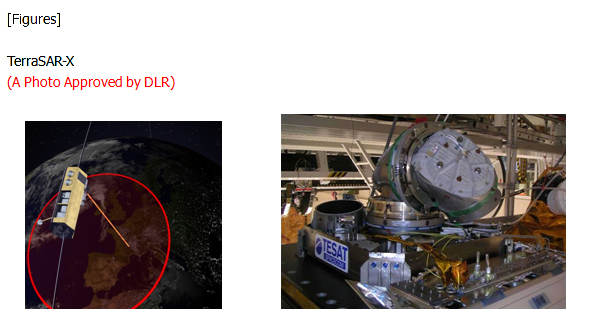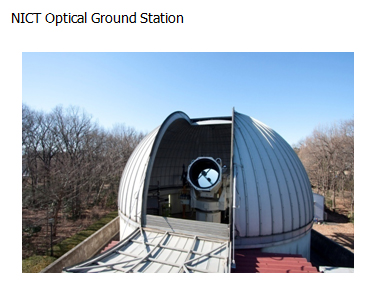The satellite-ground laser transmission demonstrations in cooperation with German Aerospace Center (DLR), European Space Agency (ESA) and National Institute of Information and Communications Technology (NICT) have been carried out with a DLR’s satellite TerraSAR-X and their own optical ground stations. NICT’s first trial was succeeded in Dec., 2008 and propagation characteristics of laser penetrating the atmosphere were measured.
Laser communications connecting satellites, aircraft and ground stations attract attentions because of large data transmission capacity to support forthcoming space activities. The investigation of atmospheric characteristics is important for satellite-ground optical links. Since the atmospheric influence depends on the environment of the ground stations, observation of laser propagation at different locations and altitudes is helpful to understand the characteristics.
DLR, ESA and NICT have their own optical ground stations in different locations, respectively. Thus the atmospheric influences on the laser propagation are measured in different environment conditions when the satellite-ground laser transmissions are carried out with their optical ground stations. The trials are coordinated by DLR with the support of ESA as a reflection of NICT’s request to participate in the campaign.
The experimental campaign is conducted with preparing the common measurement items and methods. With this approach, the experimental data obtained at those optical ground stations is useful to observe the characteristics in different locations. In Dec. 2008, NICT conducted the bidirectional laser transmission with the satellite and measured the atmospheric propagation characteristics of light.
Propagation characteristics of light penetrating atmosphere are necessary information to design optical links connecting space and ground. With the results of this campaign, NICT will perform research and development on laser communication technologies to suppress atmospheric influence and improve data transmission quality.






















